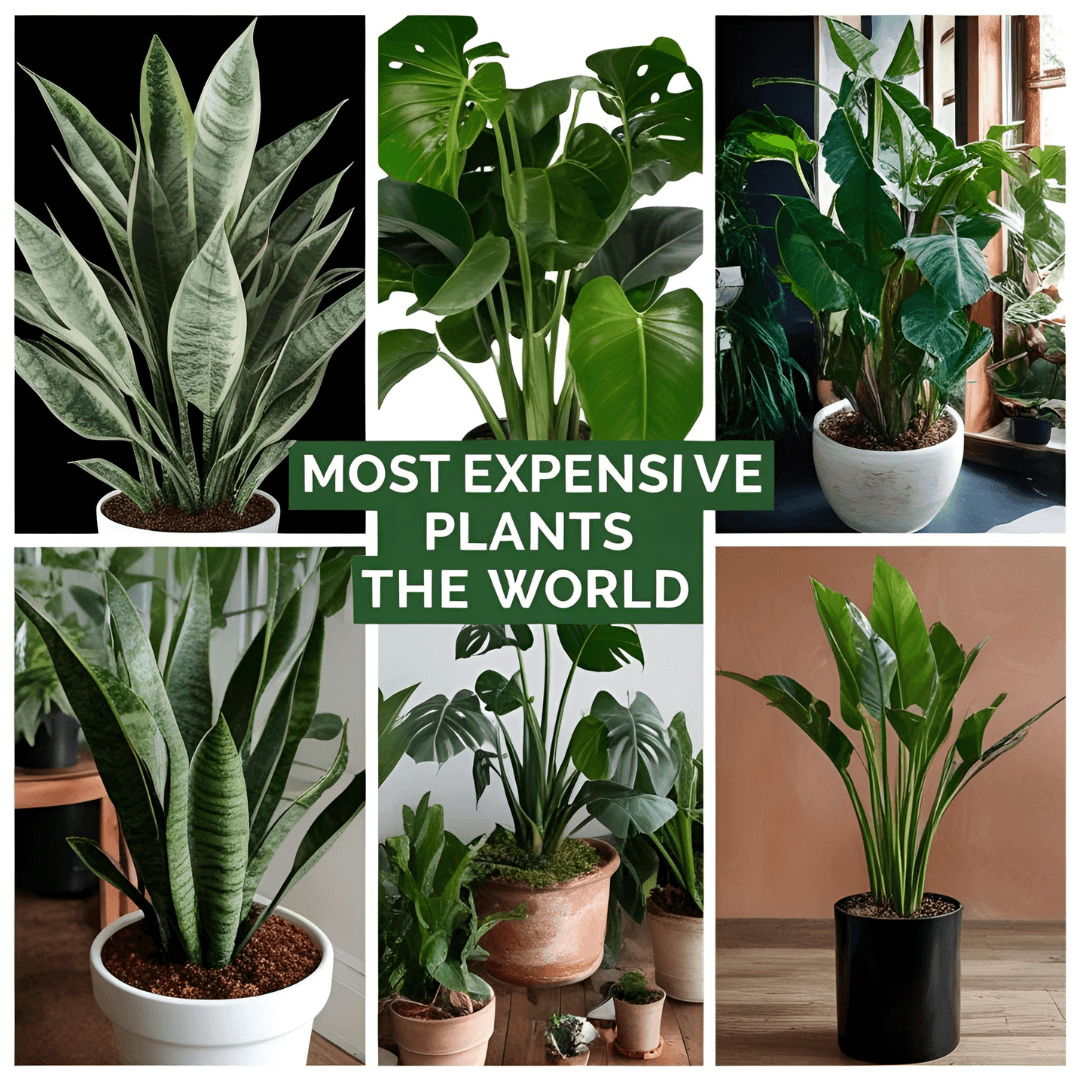When we think about luxury items, our minds usually wander to sparkling diamonds, fast cars, or perhaps rare paintings. But few realize that nature itself has its own collection of priceless treasures. Among them are plants — yes, you read that right — some of which are valued at prices that rival designer handbags and rare antiques. From exotic orchids to ancient bonsai trees, certain plants are worth thousands, even millions of dollars, not just for their beauty, but for their rarity, cultural significance, and the painstaking care required to cultivate them.
In this blog, we take a closer look at the most expensive plants in the world, uncovering what makes them so valuable and why collectors and botanists alike are willing to spend fortunes to own them.
1. Shenzhen Nongke Orchid — The Million-Dollar Orchid
Let’s start with what is arguably the most famous of all expensive plants: the Shenzhen Nongke Orchid. This man-made marvel was developed by agricultural scientists at the Shenzhen Nongke University in China, taking eight painstaking years to cultivate.
The orchid is prized not only for its delicate beauty but also for its extreme rarity. When it finally bloomed, its flowers displayed a stunning combination of colors and patterns, unmatched by any naturally occurring species. In 2005, the orchid was auctioned for an astonishing $200,000, making it the most expensive orchid ever sold.
What drives the price? It’s a combination of scientific achievement, rarity, and an exquisite appearance that captures the imagination of collectors worldwide.
2. Juliet Rose — The $5 Million Flower
The Juliet Rose is known as the "£3 million rose" because its creator, renowned British rose breeder David Austin, spent 15 years and over $5 million to develop it. Introduced at the Chelsea Flower Show in 2006, the Juliet Rose took the world by storm with its soft apricot color and romantic, full-bodied blooms.
What makes the Juliet Rose so expensive isn’t just the cost of its development. It’s the exclusivity and the breathtaking beauty of its blossoms, which have made it a must-have for luxury weddings and upscale floral arrangements. While individual stems are now more accessible, the original investment and prestige attached to this rose keep its name synonymous with botanical luxury.
3. Old Pine Bonsai Tree — The Million-Dollar Miniature Tree
Bonsai trees are often associated with patience, meticulous craftsmanship, and quiet beauty. Among them, the centuries-old bonsai pines fetch the highest prices. One of the most famous sales was of an 800-year-old bonsai tree sold at the International Bonsai Convention in Takamatsu, Japan, for $1.3 million.
These miniature masterpieces are not just plants; they are living sculptures. They require decades — sometimes centuries — of pruning, wiring, and nurturing to achieve their perfected forms. A tree of this age embodies generations of care, cultural history, and artistic expression, making it an irreplaceable treasure.
4. Variegated Monstera Deliciosa — The Designer Houseplant
The Monstera Deliciosa has taken the interior design world by storm, becoming an Instagram sensation. But not all Monsteras are created equal. The variegated variety, especially the Monstera Albo Variegata and Monstera Thai Constellation, can sell for thousands of dollars, with some specimens fetching over $5,000.
The unique white or cream marbling of the leaves makes each plant one of a kind. Because variegation occurs due to a genetic mutation, these plants are rare and notoriously difficult to propagate. Add their aesthetic appeal, and you have a houseplant that doubles as an investment.
5. Rothschild’s Slipper Orchid (Paphiopedilum rothschildianum)
Known as the "Gold of Kinabalu," Rothschild’s Slipper Orchid is one of the rarest and most expensive wild orchids. Native to the rainforests of Borneo, it can only be found in a specific region of the Kinabalu National Park.
Due to its rarity and illegal poaching, this orchid commands staggering prices in the black market, often upwards of $5,000 per stem. What makes it stand out is its unique horizontal petals, which can span up to 30 centimeters. Conservation efforts are ongoing to protect this incredible species, but its allure continues to attract both legitimate collectors and illicit traders alike.
6. Saffron Crocus (Crocus sativus) — The Spice Worth Its Weight in Gold
While the Saffron Crocus might not seem like a luxury at first glance, its stigmas produce saffron, the world’s most expensive spice. It takes around 150,000 flowers to yield just one kilogram of saffron, making the cultivation labor-intensive and time-consuming.
The plant itself can fetch high prices, especially when cultivated organically or in premium regions like Iran or Kashmir. A pound of saffron can easily cost over $5,000, which explains why even the plant is considered a valuable agricultural treasure.
7. Alocasia Azlanii — The Jewel of Borneo
Known as the "Red Mambo," this rare tropical plant native to Borneo is a prized collector's item for exotic foliage enthusiasts. Its glossy, iridescent leaves with deep metallic red and purple veins are simply stunning.
Due to its limited availability and slow growth, the Alocasia Azlanii is priced at around $300 to $2,000, depending on its size and maturity. As houseplants continue to rise in popularity, rare varieties like this have become living status symbols in stylish homes worldwide.
8. Kadupul Flower — The Priceless Bloom
The Kadupul Flower from Sri Lanka is often described as priceless — not because of its monetary value, but because it is nearly impossible to buy. Known as the "Queen of the Night," this ephemeral bloom flowers only at night and wilts before dawn.
Its rarity and fleeting beauty make it one of the most coveted flowers among botanists and collectors. Since it cannot be picked, sold, or transported without losing its value, the Kadupul Flower remains a botanical wonder admired in its natural habitat alone.
Why Are These Plants So Expensive?
The reasons for these astronomical prices are varied and fascinating:
Rarity: Many of these plants are rare either by nature or by selective cultivation.
Labor-Intensive Cultivation: Some require years or even decades of care.
Aesthetic and Design Appeal: Their unique appearances make them desirable for home decor and luxury landscaping.
Cultural and Historical Significance: Certain plants hold symbolic meanings in different cultures, enhancing their worth.
Conservation and Legal Restrictions: Endangered species and plants protected by conservation laws can fetch high prices on the black market.
Final Thoughts
Plants are no longer just humble decorations or parts of a garden — they have become luxury items, status symbols, and even investments. Whether it's a centuries-old bonsai tree, a scientifically engineered orchid, or a rare houseplant trending on social media, these green treasures remind us of nature's extraordinary ability to captivate and astonish.
As more people embrace the beauty and tranquility that plants bring into their lives, it’s not surprising to see these botanical gems appreciated not just for their looks but also for their value. After all, in a world where luxury is often man-made, there’s something incredibly special about owning a piece of living art.












